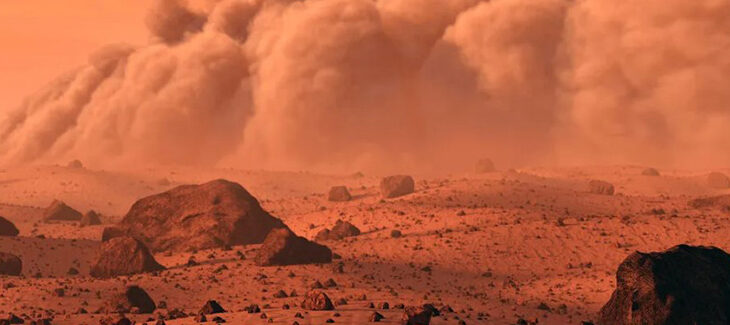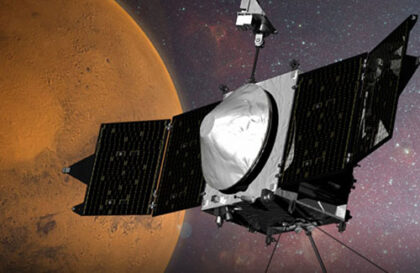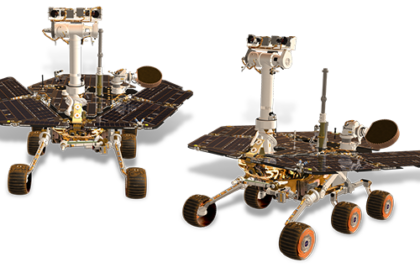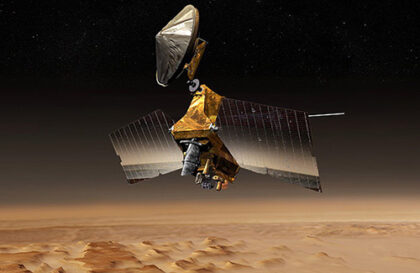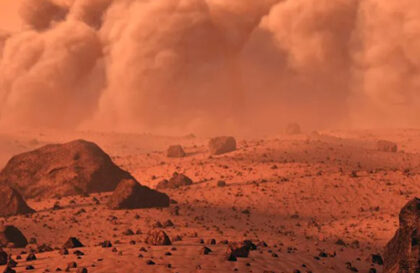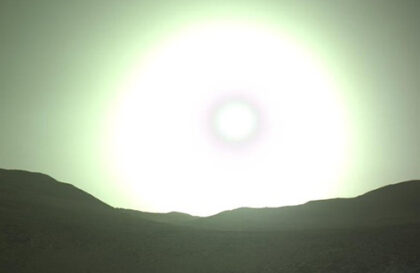In 1971, NASA’s Mariner 9 spacecraft, the first to orbit another planet, recorded a global dust storm on Mars for the first time, which was already completely covered in dust by the time it arrived.
Dust on Mars is far from just a household nuisance. Mars is famous for its powerful dust storms, capable of raising so much dust that it can be observed through telescopes, even from Earth. Since 1971, we have witnessed global dust storms on the Red Planet in 1977 (twice), 1982, 1994, 2001, 2007 and 2018.
Global Martian dust storm 2018
In the summer of 2018, a global dust storm on Mars that obscured the sun for weeks and disabled NASA’s Opportunity rover provided a unique learning opportunity. For the first time, eight spacecraft orbiting a planet or moving across its surface simultaneously observed a global dust storm unfolding.
Rotating globes from May 28 and July 1 show a global dust storm completely obscuring the surface of Mars. Credit: NASA/JPL-Caltech/MSSS
Annual dust storms on Mars cover areas the size of continents and last for several weeks. These are complemented by more giant, more intense storms that occur approximately every 5.5 Earth years and span the entire planet, known as “global dust storms.”
Despite winds of up to 60 mph (96.5 kph), Martian storms likely pose no threat to large equipment due to low atmospheric pressure—just 1% of Earth’s.
Problems of solar energy on Mars
A dust storm on Mars in 2008 temporarily cuts the amount of sunlight reaching the solar array on NASA’s Mars Exploration Rover Spirit, leaving the rover in a vulnerable state. Credit: NASA/JPL-Caltech/Cornell
Dust storms on Mars are not only spectacular but also problematic. Martian dust, having electrostatic properties and microscopic particle size, penetrates and sticks to various surfaces, including machinery and equipment. This is especially problematic for solar panels, as dust can significantly reduce the amount of light reaching them, reducing energy production.
In The Martian, Watney spends part of his day brushing dust off his solar panels.
In conditions of global dust storms, when dust enters the atmosphere en masse, insolation of the planet’s surface decreases, which requires additional engineering solutions and planning to maintain the performance of Martian equipment. It is for this reason that scientists study storms on Mars. They must ensure an uninterrupted power supply for future missions.
The Spirit and Opportunity rovers landed in 2004, so they only had to endure a global dust storm in 2007, and they essentially stopped working and went into survival mode for several weeks.
After the 2018 storm, Opportunity did not make contact. Spirit became stuck in a sand dune in 2009 and was used as a stationary platform until March 2010, when communications with the rover ceased.
Why do global dust storms occur?
Global dust storms on Mars, capable of covering the entire planet, are caused by radiative heat from sunlight heating the surface layer of the atmosphere and causing it to rise with dust. This process can generate dust devils and storms of various sizes, sometimes combining into global phenomena. However, these storms suppress causes by blocking sunlight, limiting their development. Radiative heat from sunlight cannot reach the surface.
Violent dust storms on Mars typically occur in the southern hemisphere summer due to increased radiative heat as the planet approaches the Sun due to its elliptical orbit and axial tilt. Such storms can last from weeks to months.
Scientists have yet to understand the reasons for the multi-year gaps between storms fully. The dust sources may be recharged, or the reason lies in random factors. These phenomena have been studied for more than a hundred years using terrestrial telescopes and orbiting spacecraft.
Electrical storms on Mars
Electrical storms on Earth produce bright flashes, while on Mars, the sparks generated in dust storms are less powerful, reaching approximately 20 thousand volts per meter, compared to Earth’s three megavolts per meter.
Credit: NASA
Experiment: “Rub a balloon on your head”
Researchers have discovered that collisions of dust particles on Mars can produce miniature purple flashes of electricity due to a process known as triboelectrification. It occurs when particles rubbing against each other generate electricity. This effect, examples of which are also visible on Earth, for instance, in the form of lightning during volcanic eruptions caused by the friction of ash particles, was described in the journal Icarus.
Simple examples of triboelectric charges can be seen on Earth: rubbing a balloon on your head and sticking it to a wall or rubbing your hands through a cat’s fur and feeling tiny impacts.
Credit: Wikipedia
Researchers observing Earth’s triboelectric charges suggest similar processes may occur on other planets, including Mars, despite its low atmospheric pressure. However, previous experiments conducted with Earth’s volcanic ash in low-pressure containers have proven inaccurate. It was not the interaction between ash particles that caused the sparks but the friction of the ash against the containers. In addition, the experiment used non-Martian materials.
The Xitle volcano helped correct the situation.
Help from the Mexican volcano Xitle
The researchers used basalt ash from Mexico’s Xitle volcano to test the possibility of triboelectric charges on Mars under conditions simulating the Martian atmosphere.
The ash used is similar to Martian dust, confirmed by the Pathfinder and Mars Exploration Rover missions.
The ashes were placed in glass containers with streams of CO2, allowing the particles to collide without contact with the glass. The experiment did reveal the formation of tiny static sparks, confirming the potential presence of triboelectric charges on Mars.
Researchers suspect that tiny thunderstorms are possible on Mars. They will be too small to harm Mars exploration rovers.
Banner image: Researchers simulated how colliding dust particles imitating a dust storm on the red planet may emit tiny violet flickers of electricity known as triboelectrification, or static charges. Credit: MARK GARLICK/SCIENCE PHOTO LIBRARY Via Getty
ImagesImage credit:
https://www.smithsonianmag.com
https://svs.gsfc.nasa.gov
https://www.nasa.gov
https://www.nasa.gov
https://ru.wikipedia.org
